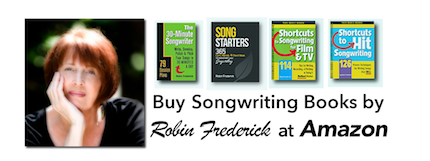As a songwriter in Nashville, Maren Morris has always expressed what was on her mind and never pulled punches. Her demand for honesty from other women in “Drunk Girls Don’t Cry” is forthright and refreshing. An edgy sense of humor and fresh Hip Hop-style rhymes light up the lyrics of “Rich.” And she successfully combines elements of the Rock and Blues genres in songs like “My Church” and ‘I Wish I Was.”
So it shouldn’t have come as a total surprise when Maren agreed to lend the power of her voice and attitude to Pop/Dance smash “The Middle,” helping to make that song a #1 Pop smash. Now here she is back in the Country genre with another big hit single.
“The Bones” – Maren Morris
Songwriters: Maren Morris, Jimmy Robbins, Laura Veltz
TECHNIQUES TO HEAR AND TRY:
- Give your singer plenty of character in the lyric.
- Add a fresh twist to a familiar lyric phrase or cliché.
- Change the beat emphasis in your melody to get attention.
- Use a different phrase length in each song section.
Listen to the song. Read the lyrics.

GENRE/STYLE: Contemporary Country
(What is a genre? Watch this video.)
“The Bones” was released as a digital single in the Country market in February 2019 and took almost a full year to climb the charts, finally reaching the #1 spot on the Country charts in February 2020. It demonstrated even wider appeal when it crossed over to the more Pop oriented Adult Alternative and Billboard Hot 100 charts. It’s a song worth studying to see how it attracts more than one audience.
SONG STRUCTURE
- VERSE 1 / PRE-CHORUS / CHORUS
- VERSE 2 / PRE-CHORUS / CHORUS
- BRIDGE / CHORUS
VERSE 1 begins with “We’re in the home stretch…”
VERSE 2 opens with the phrase “Dumb luck…”
PRE-CHORUS 1: “Life sure can try to put love through it…”
PRE-CHORUS 2: “It don’t always go the way we planned it…”
CHORUS: “When the bones are good the rest don’t matter…”
BRIDGE: (2:11) The bridge section uses the lyric from the first half of the chorus sung to an atmospheric melody that holds the song in a suspended state for a little over 20 seconds before launching into the final chorus. This section functions as a bridge because it gives the listener a musical break from the verse and chorus. But creating a new lyric could have given the listener a little more insight.
GIVE EACH SONG SECTION A UNIQUE IDENTITY: This song creates contrast between sections and makes them easy to identify by using phrases of different lengths in each one. In the verse, the phrases consist of three to four words, while in the pre-chorus the lines are broken up into single words. In the chorus the melody lines run into each other, creating the impression of much longer lines.
Each section has its own distinctive pattern of phrase lengths, letting the listener know when the song moves from one section to the next. A clear structure like this creates a sense of momentum and intention that keeps listeners involved.
– Try it now –
Look through some of the songs you’ve written. You might be surprised at how many of them have lines that are of similar length in every section. We all have a tendency to do it. Make an effort to break that habit. Create a verse and chorus or rewrite an old one and add contrast by changing the length of your phrases from one section to the next.
LYRICS
CREATE A CHARACTER: In this lyric, we get a feel for the character of the singer through her language, all of it straightforward and down to earth. Phrases like “dumb luck,” “mess it up,” and “stay put” suggest that the singer is just plain folks. Adding character to a song can bring it to life for listeners, create a more vivid experience, and make it easier for them to relate.
Keep the character of your singer in mind when choosing the vocabulary you use in your lyric. How does the character speak and think? What sort of life has the character lived? Be sure to use language that’s appropriate for the singer’s age, background, and situation. It will make your song more realistic and believable.
LYRIC STYLE: This lyric is a little outside the norm for today’s Mainstream Contemporary Country hits which often feature a “mental movie” type of lyric, using images and actions to engage the listener in a realistic storyline or situation. What we don’t see in this lyric are specific details of events. There’s no ‘when I taste tequila I think of that night in Colorado’ lyric story.
Here, the lyric has more of a Folk feel, suggesting the Americana style of Lucinda Williams (“Drunken Angel”) or Lori McKenna (“The Time I’ve Wasted”). The singer uses natural, traditional images like rain, storm, bones, wolves, and home to express the idea of a solid relationship that has weathered adversity.
For example, the lyric compares this relationship to a house built on a strong foundation: “the paint could peel, the glass could shatter” but the house remains strong. Maybe the paint on their house really did peel, but the listener understands that this image says more than that.
This type of lyric relies on images and words with emotional associations to convey layers of meaning. Shattered glass and storms suggest destruction and disaster of all kinds, both physical and emotional. Peeling paint suggests something abandoned and uncared for, whether that’s a building or a relationship. Using these kinds of images and words with associations adds depth and meaning to the listener’s experience.
TO BE CLEVER OR NOT TO BE: There’s a tradition of clever lyric twists in Country hits. Lyrics like “If I said you had a beautiful body would you hold it against me” and “One bud wiser” can still find a friendly audience in the Country market, but it’s harder than it used to be. Today’s listeners want that clever twist to express something honest or emotional.
In this song, the writers did a great job of using clever ideas and cliché twists in the service of the singer’s feelings. “We’re in the home stretch” becomes “We’re in the home stretch of the hard times” and the old chestnut about “the wolf at the door” becomes “the wolves came and went and we’re still standing.”
– Try it now –
Take a look at a lyric of your own and try adding more character to the singer through the language style and word choices you use.
Go through the lyric again and look for more words with associations and twists on familiar phrases. Then look through one of your own lyrics and see if you can add or replace a few phrases to give it more depth and interest for listeners.

MELODY
“The Bones” has a very well structured melody with plenty of contemporary listener appeal. Even as the down-home lyric with its nature imagery delivers a folksy touch, the melody remains surprisingly sophisticated, closer to today’s mainstream Country and Pop hits than the lyric might suggest. And this is where the song gets it’s dual-audience (Country and Pop) appeal.
VERSE MELODY: The verse is simple but catchy. It features a classic “see-saw” melody pattern: Lines 1 and 3 rise at the end, Lines 2 and 4 descend.
Each line has a short pickup phrase that leads to two held notes (“home stretch,” “hard times,” etc.). These held notes highlight the important words in the lyric. As the melody moves along, it focuses the listener’s attention where the writers want it to be.
PRE-CHORUS MELODY: The pre-chorus melody grabs attention and picks up energy by emphasizing the upbeats (1 and 2 and 3 and 4 and). For example, in the phrase “Life sure can try” every word lands on an upbeat. Changing the emphasis from downbeats to upbeats gives this section a syncopated, shoulder-lifting feel that’s more common in Pop/Dance melodies than Country. It picks up the energy and throws the listener a little off balance.
CHORUS MELODY: The downbeats (1, 2, 3, 4) are back in charge in the chorus melody in the easy, natural flow of the opening lines (downbeats in bold).
When the bones are good the rest don’t mat-ter.
Yeah, the paint could peel, the glass could shat-ter.
Notice the difference in the way the chorus melody affects your body versus the melody in the pre-chorus. Emphasizing the downbeats gives this melody section a stable, grounded feel while the pre-chorus upbeats create an off kilter, unstable energy.
– Try it now –
Write a melody that emphasizes the upbeats in one section and downbeats in the others.
CHORDS
This is a simple song to play. The chords are basic songwriter chords that you probably know if you play guitar or piano.
In any key, the chords are:
Verse: IV, I, VIm, V
Chorus: I, IV, V, VIm
-Try It Now –
Learn to play and sing this song. Get a feel for the different phrase lengths and the change in emphasis from the downbeats to the upbeats.
READ MORE HIT SONG GUIDES ON THIS SITE and learn from the hits!
